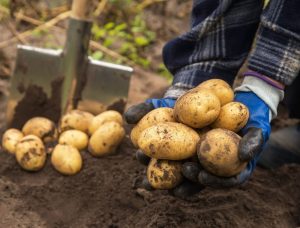
Cow manure, a natural powerhouse of nutrients, has been a farmer’s best friend for centuries. When used correctly, it can breathe new life into your soil, promoting vigorous plant growth and bountiful harvests. In this article, we’ll delve into the benefits of using cow manure, the best ratios for mixing, how to apply it effectively, and essential considerations for optimal results.
Why Cow Manure? The Benefits
- Improved Soil Structure: Cow manure adds organic matter, enhancing soil texture, aeration, and water retention. This creates a more hospitable environment for plant roots.
- Nutrient Powerhouse: It’s rich in nitrogen, phosphorus, potassium (the key N-P-K nutrients), and other micronutrients vital for plant health.
- Boosts Microbial Life: Cow manure introduces beneficial microorganisms that help break down organic matter and increase nutrient availability for your plants.
- Long-Term Fertility: Unlike chemical fertilizers, manure’s effects linger, slowly releasing nutrients for sustained plant growth.
Composted vs. Fresh: Choosing the Right Kind
- Composted Manure: This is the best choice for most garden plants. Composting breaks down raw manure, eliminating weed seeds, pathogens, and reducing the risk of nitrogen ‘burn’. It has a milder, earthy smell.
- Fresh Manure: Use fresh manure sparingly and with caution. Only apply it well in advance of planting (ideally, several months), as it has a higher concentration of nutrients that can damage young plants.
Finding the Perfect Mix: Ratios for Success
The ideal ratio of cow manure to soil depends on several factors, including your existing soil quality and the plants you’re growing. Here’s a general guide:
- Vegetable Gardens: A 1:3 ratio (1 part manure to 3 parts soil) is a good starting point. For heavy feeders like tomatoes or peppers, you can increase to 1:2.
- Flower Beds: Start with a 1:4 ratio and observe plant growth. Adjust as needed.
- Poor Soil: If your soil is very depleted, you can go with a 1:1 ratio initially to significantly boost fertility.

How to Incorporate Cow Manure
- Timing: For composted manure, incorporate it anytime. Fresh manure needs several months to break down before planting. Fall application is ideal.
- Spread Evenly: Distribute an even layer of manure over your garden bed.
- Work It In: Using a shovel or tiller, thoroughly mix the manure into the top 6-12 inches of soil.
- Water: Give the area a good watering to help settle the manure and start the decomposition process.
Important Considerations
- Source of Manure: Ensure manure comes from healthy animals that have not been fed chemically treated feed or given antibiotics, as these can persist in the manure.
- Salt Content: Manure from coastal regions may have high salt levels, potentially damaging plants. Opt for inland sources if possible.
- Overapplication: Too much manure can lead to excessive nutrients, hindering plant growth or even causing damage. Stick to recommended ratios.
- Vegetables Grown in Contact with Soil: If growing veggies like lettuce or carrots, use well-composted manure to completely minimize food safety risks.
Additional Tips
- Combine cow manure with other organic amendments like leaf mold or kitchen scraps for a balanced nutrient profile.
- If you only have fresh manure, create a designated composting area to allow it to break down before use.
- Monitor your plants closely after applying manure and adjust future applications depending on their response.
The Transformation Awaits
By strategically incorporating cow manure into your soil, you’re giving your plants a gift that keeps on giving. Its transformative power will lead to stronger roots, lusher foliage, and more plentiful harvests. Remember, consistency is key: regular applications of cow manure will create a healthy, thriving garden ecosystem for years to come.





